Best Message Oriented Middleware
Message oriented middleware (MOM) is a software architecture that enables different applications or components to communicate and exchange data with each other by sending and receiving messages. It acts as a bridge between various systems, facilitating the seamless transmission of information across different platforms, programming languages, and network protocols.
MOM provides a reliable and scalable way of integrating heterogeneous systems and supports various messaging patterns such as publish-subscribe, point-to-point, request-reply, and event-driven communication. This allows for asynchronous and decoupled interaction between applications, reducing dependencies and enabling greater flexibility in system design.
Overview of Message Oriented Middleware
Message Oriented Middleware comprises of several components that work together to enable communication between distributed applications. These components include message brokers, message queues, and message channels.
A message broker acts as an intermediary between the sender and receiver applications, ensuring messages are delivered to the intended recipients. It provides features like message routing, filtering, transformation, and persistence. Message queues enable storing and buffering of messages, ensuring reliable delivery and supporting asynchronous messaging. Message channels provide the communication pathways for messages to flow between applications.
Advantages and Benefits of Message Oriented Middleware
Message Oriented Middleware offers a range of advantages and benefits, making it a popular choice for building reliable and scalable distributed systems.
One of the main advantages is its ability to handle large volumes of data and process messages in parallel. MOM allows applications to process messages asynchronously, which improves overall system performance by decoupling the sender and receiver applications. This asynchronous processing also enables load balancing and fault tolerance, ensuring high availability even in the face of network or application failures.
Another benefit of MOM is its support for heterogeneous systems. It allows different applications to communicate regardless of the programming language, operating systems, or network protocols they use. This makes it easier to integrate legacy systems with modern applications and facilitates the adoption of new technologies without disrupting existing systems.
MOM also provides a way to manage and monitor the flow of messages in the system. It offers features like message tracking, auditing, and logging, which helps in troubleshooting and debugging. It also enables the implementation of security measures like authentication and encryption to protect sensitive data.
Key Features and Functionality of Message Oriented Middleware
Message Oriented Middleware solutions offer a set of essential features and functionalities to facilitate efficient messaging between applications.
1. Message Queuing: MOM allows messages to be stored in queues, ensuring reliable delivery even if the receiving application is offline or unavailable.
2. Publish-Subscribe: It supports the publish-subscribe pattern, where multiple subscribers can receive messages published by a single sender. This pattern enables broadcasting messages to multiple recipients and simplifies the implementation of event-driven architectures.
3. Request-Reply: MOM facilitates request-reply messaging, enabling synchronous communication between applications. It ensures the sender receives a response from the receiver, making it suitable for scenarios where a requestor expects immediate feedback.
4. Message Transformation: MOM allows messages to be transformed from one format to another, enabling interoperability between applications that use different data formats or protocols.
5. Quality of Service (QoS): It offers various levels of QoS, including guaranteed delivery, message persistence, and reliable messaging, ensuring messages are delivered reliably and in the correct order.
Comparison of Different Message Oriented Middleware Solutions
Several Message Oriented Middleware solutions are available in the market, each with its own set of features, capabilities, and performance characteristics. Some popular MOM solutions include Apache Kafka, RabbitMQ, ActiveMQ, IBM MQ, and Azure Service Bus. Let’s compare a few of these solutions based on their key attributes:
1. Performance: Apache Kafka is known for its high throughput and low latency, making it suitable for use cases that require real-time data processing and streaming. RabbitMQ is widely used for its lightweight and efficient message delivery, while ActiveMQ provides robustness and reliability.
2. Scalability: Kafka, RabbitMQ, and Azure Service Bus are highly scalable, allowing seamless scaling horizontally and vertically to handle increasing message loads. ActiveMQ and IBM MQ also support scalable deployments but may require additional configurations.
3. Ease of Use: RabbitMQ and Azure Service Bus are known for their simplicity and ease of use, making them suitable for developers new to MOM. Apache Kafka is more complex to set up and manage but offers advanced features for experienced users.
4. Persistence: Kafka and RabbitMQ persist messages on disk, allowing for guaranteed delivery even in the event of failures. ActiveMQ and IBM MQ also provide message persistence while Azure Service Bus offers both persistent and non-persistent messaging options.
Factors to Consider When Choosing Message Oriented Middleware
When selecting the best message-oriented middleware solution, several factors need to be considered based on specific business requirements:
1. Scalability: Determine the scalability needs of the application and choose a solution that can handle the expected message loads without sacrificing performance or reliability.
2. Performance: Consider the speed and efficiency of message processing, as well as any requirements for low latency or real-time data processing.
3. Integration: Ensure the MOM solution supports the required messaging patterns, protocols, and data formats needed for integrating applications.
4. Reliability: Evaluate the reliability and fault tolerance features of the solution, such as message persistence, guaranteed delivery, and fault recovery.
5. Ease of Use: Consider the ease of installation, configuration, and management, especially if the development team is unfamiliar with message-oriented middleware.
6. Community and Support: Research the size and activity of the user community and the availability of documentation, forums, and support resources.
7. Cost: Consider the licensing and operational costs associated with the MOM solution and whether it aligns with the organization’s budget.
Best Practices for Implementing Message Oriented Middleware
To ensure a successful implementation of Message Oriented Middleware, it is essential to follow best practices and guidelines. Here are some recommendations:
1. Understand the Business Requirements: Clearly define the needs and expectations of the application and identify the critical messaging patterns and modes of communication.
2. Design Message Structure: Define a well-structured messaging schema that includes necessary fields and supports future extensibility.
3. Plan for Failure Scenarios: Implement appropriate error handling mechanisms, like retry strategies, dead-letter queues, and back-off policies, to handle message processing failures.
4. Security Considerations: Implement secure communication channels, message encryption, and authentication mechanisms to protect sensitive data and ensure the integrity of messages.
5. Monitoring and Logging: Set up monitoring tools and logging systems to track message flow, detect performance bottlenecks, and aid in troubleshooting.
6. Testing and Validation: Develop comprehensive test cases to validate the messaging flow, including scenarios with high message load, failure conditions, and edge cases.
Case Studies: Successful Implementations of Message Oriented Middleware
Numerous organizations have successfully implemented Message Oriented Middleware to solve their integration challenges. Here are two case studies showcasing its benefits:
1. eBay: eBay adopted Apache Kafka as their messaging backbone to handle high message volumes and provide real-time data integration across their distributed systems. Kafka’s scalability, fault tolerance, and low latency ensured smooth handling of billions of events daily.
2. Uber: Uber relies on RabbitMQ as its messaging middleware to enable communication between various microservices within their architecture. RabbitMQ’s ease of use, flexibility, and reliability supported seamless integration of numerous services and enabled real-time tracking and dispatching.
Challenges and Limitations of Message Oriented Middleware
While Message Oriented Middleware offers significant advantages, it is not without challenges and limitations. Some key considerations include:
1. Complexity: Implementing MOM solutions can be complex, requiring expertise in distributed systems, messaging protocols, and synchronization.
2. Operational Overhead: Setting up and managing MOM infrastructure may require additional resources and effort for monitoring, maintenance, and troubleshooting.
3. Latency: Asynchronous messaging can introduce noticeable latency, especially in request-reply scenarios requiring immediate feedback.
4. Message Ordering: Guaranteeing message ordering across distributed systems can be challenging, especially when multiple consumers are involved or when messages are routed through different channels.
Future Trends and Innovations in Message Oriented Middleware
As technology continues to evolve, several trends and innovations are shaping the future of Message Oriented Middleware:
1. Cloud-Native MOM: MOM solutions are increasingly being designed to run natively in cloud environments, leveraging the scalability, elasticity, and managed services offered by cloud providers.
2. Event-Driven Architectures: The rise of event-driven architectures is driving the adoption of MOM solutions. MOM enables integration of various services and systems in a loosely coupled manner, providing the flexibility and agility required for event-driven architectures.
3. Internet of Things (IoT) Integration: As the number of IoT devices increases, MOM solutions will play a critical role in enabling communication and data exchange between heterogeneous devices, platforms, and backend systems.
4. Integration with AI and ML: MOM solutions are likely to incorporate features and integrations with artificial intelligence (AI) and machine learning (ML) technologies to enable advanced message routing, transformation, and analysis.
FAQs
1. What is the difference between object-oriented middleware and message-oriented middleware?
Object-oriented middleware focuses on integrating distributed objects or components by providing mechanisms for remote method invocations and object references. It enables objects to communicate and collaborate across different systems.
Message-oriented middleware, on the other hand, focuses on communication between applications or components by sending and receiving messages. MOM offers asynchronous messaging and supports various messaging patterns, making it suitable for integrating heterogeneous systems.
2. What are the advantages and disadvantages of message-oriented middleware?
Advantages of message-oriented middleware include asynchronous communication, scalability, fault tolerance, support for heterogeneous systems, and the ability to handle large message volumes. It also enables decoupled and flexible system design.
Disadvantages of message-oriented middleware include increased complexity, potential latency in request-reply scenarios, challenges in message ordering, and additional operational overhead for setup and maintenance.
3. Which is the best message-oriented middleware solution?
The choice of the best message-oriented middleware solution depends on specific business requirements and considerations such as performance, scalability, ease of use, integration capabilities, reliability, and cost. Some popular solutions include Apache Kafka, RabbitMQ, ActiveMQ, IBM MQ, and Azure Service Bus.
4. How can message-oriented middleware be used in practice?
Message-oriented middleware can be used in various practical scenarios, including real-time data integration, service-oriented architectures, event-driven systems, microservices communication, IoT device integration, and distributed batch processing.
5. What are some challenges in implementing message-oriented middleware?
Challenges in implementing message-oriented middleware include understanding the complexity of distributed systems, ensuring message ordering in distributed environments, managing potential latency in synchronous communication, and investing resources in monitoring and troubleshooting the messaging infrastructure.
In conclusion, Message Oriented Middleware is a powerful architecture for enabling communication and integration between distributed applications. It offers advantages such as scalability, fault tolerance, asynchronous messaging, and support for heterogeneous systems. Choosing the right MOM solution requires considering factors like performance, scalability, ease of use, and integration capabilities. As technology continues to evolve, MOM solutions will play a crucial role in supporting cloud-native and event-driven architectures, IoT integration, and the AI/ML-driven message processing.
Message Oriented Middleware
What Is Message-Oriented Middleware?
Message-oriented middleware (MOM) is a software solution that enables the exchange of messages between different software applications within an enterprise or across distributed systems. MOM provides a scalable and reliable way for applications to communicate with each other asynchronously, allowing them to effectively decouple and work independently. This decoupling is vital as it ensures that applications can function even when one or more components are facing issues or downtime.
MOM operates on the publish/subscribe communication model, where applications can publish messages to specific topics or channels, and other applications can subscribe to those topics to receive the messages. This model allows for flexible and selective messaging, ensuring that each application only receives the messages it requires, thereby reducing network traffic and minimizing processing overhead.
Message-oriented middleware typically consists of a message broker or server that acts as a central hub for message exchange. This server manages the routing and delivery of messages, ensuring that they reach their intended destinations reliably and efficiently. MOM servers employ various protocols and standards to establish communication between applications, such as the Message Queuing Telemetry Transport (MQTT), Advanced Message Queuing Protocol (AMQP), or Java Message Service (JMS).
Key features of message-oriented middleware include:
1. Asynchronous communication: MOM enables applications to send and receive messages asynchronously, allowing them to operate independently of one another. This asynchronous nature improves system responsiveness and scalability as applications can continue working without waiting for immediate responses.
2. Reliability: MOM ensures reliable message delivery through mechanisms like acknowledgments and persistent storage. If a message fails to reach the intended recipient, it can be retried or routed to alternate destinations. This ensures that messages are not lost or dropped during communication, even in the event of network failures or application crashes.
3. Scalability: Message-oriented middleware enables applications to scale horizontally by distributing them across multiple instances or machines. As applications can communicate independently through messages, adding more instances can enhance performance without affecting existing functionality. This scalability is particularly important in modern distributed and cloud-based environments.
4. Message filtering and transformation: MOM servers provide capabilities to filter and transform messages based on certain criteria. This allows applications to only receive messages that are relevant to them, reducing unnecessary data processing and improving efficiency. Message transformation allows message formats to be converted to the one required by the destination application, ensuring compatibility and seamless integration.
Frequently Asked Questions (FAQs):
Q: What are some common use cases for message-oriented middleware?
A: Message-oriented middleware finds usage in a variety of scenarios, such as financial systems for real-time trading, stock market data dissemination, supply chain management, IoT data integration, and distributed systems. It is particularly suitable for applications where reliability, scalability, and asynchronous communication are crucial.
Q: How does message-oriented middleware differ from other communication patterns?
A: Unlike request/reply patterns, where applications wait for immediate responses, MOM allows asynchronous communication, enabling applications to work independently. While MOM focuses on message exchange and decoupling, other patterns like Remote Procedure Calls (RPC) and Representational State Transfer (REST) focus on invoking methods or accessing resources directly.
Q: Can message-oriented middleware be used in cloud environments?
A: Yes, message-oriented middleware is well-suited for cloud environments. It can facilitate communication between applications running in different cloud instances, regions, or even across hybrid cloud environments. MOM provides the flexibility and scalability required to handle the dynamic nature of cloud infrastructures.
Q: What are some popular message-oriented middleware solutions?
A: There are several popular message-oriented middleware solutions available, including Apache Kafka, RabbitMQ, IBM MQ, ActiveMQ, and Azure Service Bus. Each solution has its strengths and target use cases, so it is essential to assess and select the one that best fits the requirements of your specific application or ecosystem.
In conclusion, message-oriented middleware is a fundamental component for enabling efficient and reliable communication between applications in distributed systems. It provides an asynchronous, scalable, and decoupled approach to exchanging messages, allowing applications to function independently while maintaining reliability and scalability. MOM is widely adopted across various industries and is an essential tool for building robust and scalable modern software architectures.
Is Rabbitmq A Message-Oriented Middleware?
Message-oriented middleware (MOM) plays a crucial role in modern software architecture, enabling separate systems to communicate and exchange data reliably. RabbitMQ is a popular open-source MOM solution that provides messaging capabilities for various applications and systems. In this article, we will explore RabbitMQ and dive into its functionalities, use cases, and advantages.
What is RabbitMQ?
RabbitMQ is a powerful and versatile message broker that allows different software systems to communicate with each other in a distributed environment. It provides a reliable platform for sending, receiving, and managing messages between applications, services, and various components of a system.
As an implementation of the Advanced Message Queuing Protocol (AMQP), RabbitMQ enables decoupling of components within a system. It supports multiple messaging patterns, including point-to-point, publish/subscribe, and request/reply, making it flexible enough to address a wide range of communication needs.
How does RabbitMQ work?
At its core, RabbitMQ relies on a message queue to store and route messages from the sender to the intended recipient. Here’s a high-level overview of how RabbitMQ works:
1. Producers: Applications or systems that send messages are known as producers. They create messages and send them to RabbitMQ for further processing.
2. Exchanges: Producers publish messages to exchanges, which act as message routers. Exchanges receive messages from producers and decide how to distribute them to queues based on predefined routing rules.
3. Queues: Queues are the destination for messages in RabbitMQ. They store messages until they are consumed by consumers or subscribers.
4. Consumers: Applications or systems that receive and process messages are known as consumers. They subscribe to queues and retrieve messages for further processing.
5. Bindings: Bindings connect exchanges and queues, defining how messages should flow from an exchange to specific queues based on routing rules.
RabbitMQ allows for asynchronous communication, meaning the producer can send messages without waiting for the recipient to process them immediately. This enables greater scalability and fault tolerance in distributed systems.
Use cases for RabbitMQ
RabbitMQ’s flexibility and reliability make it suitable for a wide range of use cases. Some common scenarios where RabbitMQ excels include:
1. Event-driven architectures: RabbitMQ’s publish/subscribe pattern makes it ideal for building event-driven systems where components need to react to specific events or messages.
2. Task offloading: RabbitMQ’s message queues enable workload distribution among multiple workers or machines, reducing bottlenecks and improving performance.
3. Microservices communication: RabbitMQ can act as the communication backbone for microservices architectures, ensuring reliable messaging between different services.
4. Scalable systems: RabbitMQ’s ability to handle large volumes of messages and its support for clustering make it suitable for high-throughput systems that require scalability.
5. IoT systems: RabbitMQ’s lightweight footprint and support for various protocols, including MQTT, make it suitable for IoT (Internet of Things) applications, where resource-constrained devices need to exchange data reliably.
Advantages of RabbitMQ
RabbitMQ offers several advantages that contribute to its popularity among developers and architects:
1. Reliability: RabbitMQ supports message persistence, ensuring that messages are not lost even in the event of system failures. This makes it a reliable choice for critical message exchange scenarios.
2. Versatility: RabbitMQ supports multiple messaging patterns, enabling developers to choose the most appropriate approach for their application’s needs.
3. Interoperability: RabbitMQ implements the AMQP standard, ensuring compatibility with various programming languages and platforms. It also supports other protocols like MQTT and STOMP, expanding its reach to different types of applications.
4. Scalability: RabbitMQ’s clustering capability allows for horizontal scaling, ensuring that the system can handle increased message traffic and high loads.
5. Extensibility: RabbitMQ supports plugins and customizations, allowing developers to add additional functionalities and adapt the message broker to their specific requirements.
FAQs:
Q1. Is RabbitMQ only suitable for enterprise-level systems?
No, RabbitMQ can be used in systems of any size. While it is popular among enterprise-level systems due to its robustness and scalability, RabbitMQ’s flexibility makes it suitable for projects of varying sizes.
Q2. Can RabbitMQ guarantee message delivery?
RabbitMQ provides mechanisms to ensure reliable message delivery, such as acknowledgments and persistence. However, developers need to design their applications to handle potential message loss or failures gracefully.
Q3. Is RabbitMQ a replacement for a database?
No, RabbitMQ is not a database. It is a messaging system that focuses on reliable message exchange between software components. Databases, on the other hand, store and manage persistent data.
Q4. Is RabbitMQ difficult to set up and manage?
RabbitMQ has a user-friendly management interface and offers extensive documentation. While it might require some configuration and setup, it is generally considered manageable, even for developers with moderate experience.
Q5. Can RabbitMQ be used with cloud platforms like AWS or Azure?
Yes, RabbitMQ can be deployed on cloud platforms like AWS (Amazon Web Services) and Azure. Both platforms provide management services for RabbitMQ, simplifying its deployment and management in cloud environments.
Conclusion
RabbitMQ is a versatile and reliable message-oriented middleware that facilitates communication between software components or systems in a distributed environment. With its support for multiple messaging patterns, scalability, and interoperability, RabbitMQ has gained popularity among developers and architects for various use cases.
Whether it’s building event-driven architectures, microservices communication, or handling large volumes of messages in scalable systems, RabbitMQ provides a robust and flexible solution. By leveraging its features, developers can enhance the reliability and efficiency of their applications, ultimately resulting in better overall system performance.
Keywords searched by users: best message oriented middleware object-oriented middleware, message-oriented middleware advantages and disadvantages
Categories: Top 63 Best Message Oriented Middleware
See more here: nhanvietluanvan.com
Object-Oriented Middleware
Object-oriented middleware is based on the principles of object-oriented programming (OOP) and is designed to simplify the development and maintenance of large-scale distributed applications. It provides a layer of abstraction between components, enabling them to communicate and collaborate without requiring the underlying infrastructure to understand the details of each component’s implementation.
One of the key benefits of object-oriented middleware is its ability to enable communication between components written in different programming languages. This feature is particularly useful in complex systems where different modules or services are designed using different programming languages, such as C++, Java, or Python. With object-oriented middleware, developers can concentrate on their own components’ logic and functionality without worrying about the intricacies of inter-component communication protocols or the underlying infrastructure.
Another advantage of using object-oriented middleware is the flexibility it offers in terms of the underlying hardware platform. Components can run on different machines or even different operating systems, yet still communicate and collaborate seamlessly. This flexibility allows organizations to leverage their existing infrastructure without being bound to a particular technology stack.
The heart of any object-oriented middleware architecture is the Object Request Broker (ORB). The ORB acts as a messaging system, enabling objects to request services from other objects and receive responses. It handles all the communication details such as encoding, decoding, routing, and marshaling, providing a transparent and efficient communication mechanism.
In order to achieve transparency, object-oriented middleware relies on several standard protocols, such as the Common Object Request Broker Architecture (CORBA) or the Java Remote Method Invocation (RMI). These protocols define the rules and conventions for communication, ensuring interoperability among different middleware implementations.
Implementing object-oriented middleware requires some upfront effort. Developers need to define the interfaces of the objects they want to expose to other components. These interfaces act as contracts, specifying the methods and data that can be accessed from remote objects. Once the interfaces are defined, developers can use tools provided by the middleware platform to generate the required code skeletons and stubs, which serve as the communication glue between the objects.
Object-oriented middleware is widely used in various domains, including telecommunications, finance, and healthcare. Its flexibility, scalability, and ability to integrate diverse technologies make it an attractive choice for building distributed systems. By encapsulating the complexities of inter-component communication, object-oriented middleware enables developers to focus on their core functionality, resulting in shorter development cycles and more maintainable codebases.
FAQs:
Q: Is object-oriented middleware the same as a messaging queue or a publish-subscribe system?
A: No, object-oriented middleware is more encompassing and provides a higher level of abstraction. While messaging queues and publish-subscribe systems focus on message passing, object-oriented middleware allows for richer interaction and collaboration between objects.
Q: Can object-oriented middleware be used in cloud-based applications?
A: Absolutely! Object-oriented middleware can seamlessly integrate components running in different cloud environments or on-premise infrastructures, providing a unified communication layer.
Q: Does object-oriented middleware introduce performance overhead?
A: Like any middleware, object-oriented middleware does introduce some performance overhead. However, modern implementations are highly optimized, and the benefits of abstraction and interoperability often outweigh the slight performance impact.
Q: Is object-oriented middleware only useful for large-scale systems?
A: While object-oriented middleware shines in large-scale systems, it can also be beneficial in smaller projects. It simplifies communication and enhances code reusability, making it easier to maintain and evolve the system over time.
Q: Are there open-source implementations of object-oriented middleware?
A: Yes, there are several open-source object-oriented middleware platforms available, such as CORBA (TAO), ZeroC Ice, and Java RMI/IIOP. These platforms provide a cost-effective solution for organizations of all sizes.
Message-Oriented Middleware Advantages And Disadvantages
Advantages of Message-Oriented Middleware:
1. Asynchronous Communication: One of the key advantages of MOM is the ability to decouple the sender and receiver of messages through asynchronous communication. The sender can send a message and continue its processing without waiting for a response, increasing the efficiency and responsiveness of the system. This enables applications to handle a large number of concurrent requests and improves overall system performance.
2. Loose Coupling: MOM facilitates loose coupling between distributed applications, allowing them to communicate without needing to know about each other’s implementation details. By using messages as the communication medium, applications can stay agnostic of each other’s existence, making it easier to add or remove components from the system without affecting the overall architecture. This flexibility enables organizations to adapt and evolve their systems more easily in response to changing business requirements.
3. Reliability and Fault Tolerance: MOM provides reliable messaging by ensuring that messages are delivered to the intended recipient exactly once or as per the specified quality of service. If a receiver application is temporarily unavailable, the message can be stored in a message queue until it becomes accessible. This fault-tolerant approach reduces the risk of message loss and ensures the integrity of data transmission. Additionally, MOM supports features like message persistence, transactional messaging, and message ordering to further enhance reliability.
4. Scalability: Message-oriented middleware enables horizontal scalability by distributing the load across multiple instances of message brokers or servers. This allows applications to handle increased message traffic and ensures high availability even during peak periods. Scalability is particularly important in modern distributed systems where the volume of data and the number of connected applications are constantly growing. MOM provides a scalable infrastructure that can meet these increasing demands without compromising performance.
5. Protocol Independence: MOM supports different communication protocols, making it possible to integrate applications developed using diverse technologies. It acts as a bridge between incompatible systems, facilitating seamless communication across platforms and programming languages. This protocol independence enables organizations to leverage existing investments in legacy systems while gradually migrating to newer technologies.
Disadvantages of Message-Oriented Middleware:
1. Complexity: Implementing and managing message-oriented middleware requires additional effort and expertise compared to simpler communication mechanisms such as remote procedure calls or direct database access. Organizations need to invest in training their development teams or hire specialized personnel to design, develop, deploy, and maintain the messaging infrastructure. The complexity can be further amplified when dealing with large-scale distributed systems and ensuring proper configuration of messaging components.
2. Increased Latency: Asynchronous communication introduces a certain degree of latency due to the decoupling of message sending and receiving. While this is advantageous for handling concurrent requests and improving overall system performance, it can be a drawback in scenarios where real-time or near real-time interactions are critical. Applications that require immediate responses, such as real-time analytics or high-frequency trading, may find MOM’s latency unacceptable for their needs.
3. Message Order: In distributed systems, ensuring strict message order can be challenging. MOM provides mechanisms to maintain message order, but they come with their own overhead and operational complexities. If maintaining strict order is not a requirement for a particular application, using MOM may introduce unnecessary complexity and performance overhead.
FAQs:
Q1. Is message-oriented middleware suitable for all types of applications?
A1. While message-oriented middleware offers numerous advantages, it may not be suitable for all types of applications. Applications with real-time or low-latency requirements might find other communication mechanisms more appropriate. However, for applications that need reliability, scalability, loose coupling, and support for different platforms, MOM can be a valuable option.
Q2. Can MOM handle large message volumes efficiently?
A2. Yes, message-oriented middleware is designed to handle large message volumes efficiently, making it suitable for high-throughput applications. By leveraging features like load balancing, sharding, and distributed message queues, MOM can effectively handle and process messages at scale.
Q3. Is MOM a replacement for traditional middleware technologies?
A3. Message-oriented middleware is not a direct replacement for traditional middleware technologies like remote procedure calls or service-oriented architectures. Each technology has its own strengths and weaknesses, and the choice depends on specific application requirements. MOM can be used in conjunction with other middleware technologies to build a comprehensive and robust distributed system.
In conclusion, message-oriented middleware offers a range of benefits including asynchronous communication, loose coupling, reliability, scalability, and protocol independence. These advantages make it a powerful tool for integrating distributed applications and systems. However, the complexity of implementation and management, increased latency, and message ordering challenges need to be considered while evaluating MOM as a solution. By carefully assessing the requirements and trade-offs, organizations can make an informed decision when considering the adoption of message-oriented middleware in their systems.
Images related to the topic best message oriented middleware

Found 13 images related to best message oriented middleware theme
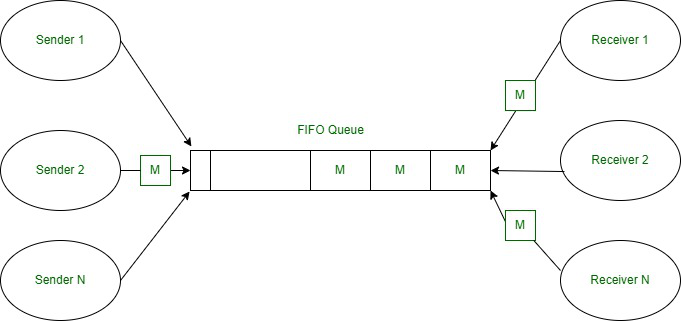


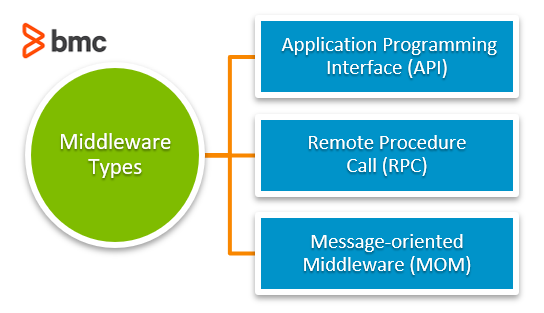


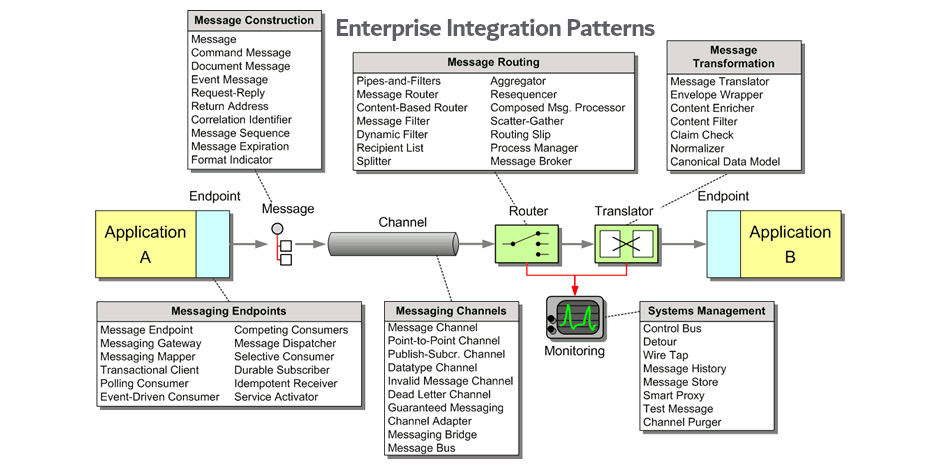





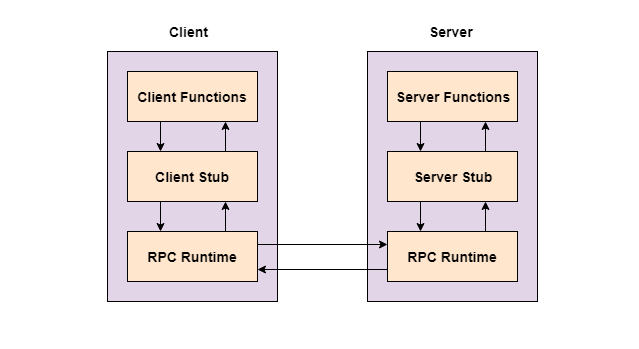
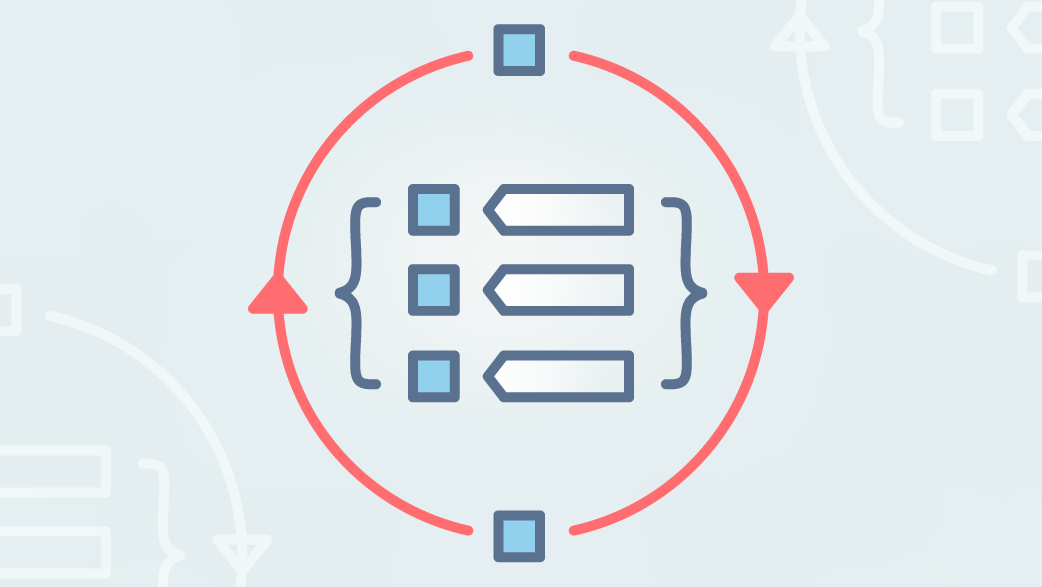
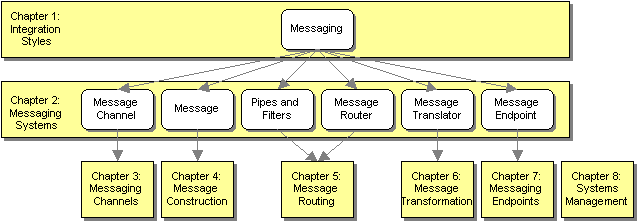
Article link: best message oriented middleware.
Learn more about the topic best message oriented middleware.
- List of Top Message Oriented Middleware 2023 – TrustRadius
- Chapter 5. Message Oriented Middleware (MOM) – O’Reilly
- Understanding RabbitMQ Queue & Messaging Simplified 101 – Learn
- Message-oriented Middleware for Scalable Data Analytics Architectures
- Middleware | Computerworld
- Best Message Oriented Middleware (MOM) Solutions – PeerSpot
- Message-oriented Middleware: Agile Systems for IT Success
- What is message-oriented middleware? – Stack Overflow
- What is Message Oriented Middleware (MOM)?
- Choosing a Message-Oriented Middleware Platform | Sandhata
- Chapter 5. Message Oriented Middleware (MOM) – O’Reilly
See more: https://nhanvietluanvan.com/luat-hoc/